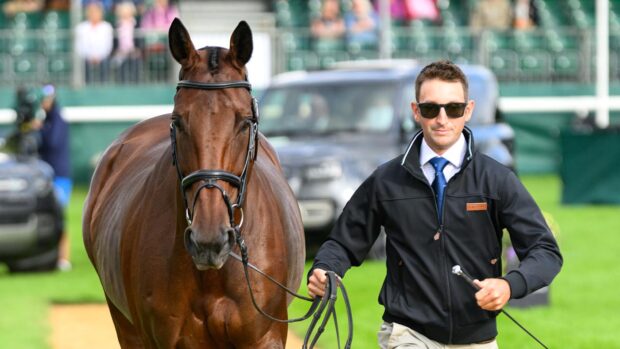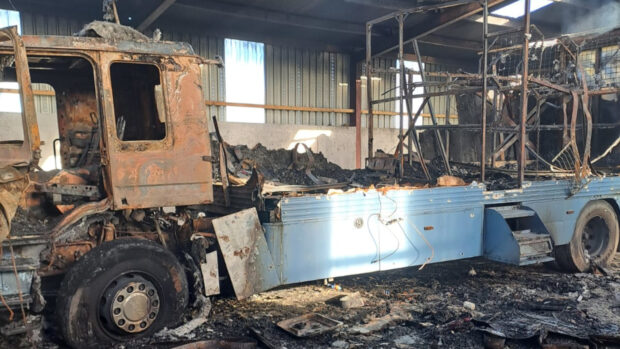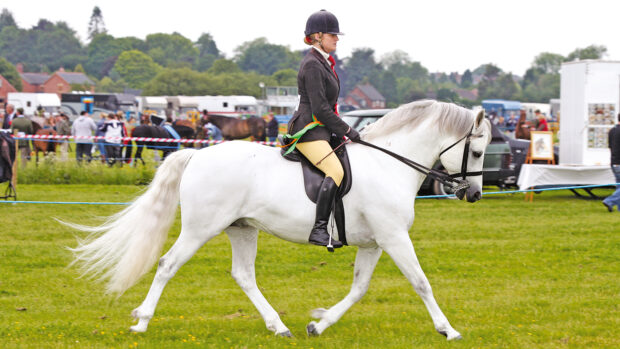One of the most enchanting things about the Games is the variety of characters and backgrounds that come together in the cauldron of the Olympic showjumping stadium. Take José María Larocca, a 55-year-old Argentinean who has somehow combined a high-powered office job with competing at championship level.
Paris 2024 was José’s fifth Olympic Games. He may have made a fortune through his business endeavours, but you can’t simply buy your way to multiple championships jumping over 1.60m. Riding Finn Lente, a 14-year-old Gaillard De Pomme gelding, José qualified for the individual final with a fast four-fault round.
But for all his success as an amateur rider, greater things may yet be to come. José is quitting his 32-year career as a management consultant in the oil trading industry to concentrate fully on horses.
“I’ve been working in an office for many, many years, and I’m retiring,” he says. “I’m going to step down finally at the beginning of October and dedicate myself a little bit more to riding.
“I’m not that young, but I’m still very enthusiastic, so I want to continue riding for a few more years. I saw that I’m not the oldest rider here – Rolf-Goran Bengtsson is older than me.”
He mentions, too, the inspiration of John Whitaker – now 69 – as “exceptional – maybe the best rider in the history of the sport”.
José María Larocca’s route into Olympic showjumping
José started riding as a child and competed up to 1.40m, but once he moved to London in his early twenties, he had to put his sport to one side. He didn’t ride at all for 10 years.
“Working in an office in London is very hectic; it doesn’t give you many opportunities to take time for other things apart from work,” he said.
But his passion for horses gnawed at him, and as soon as he was in a situation to take up the reins again at the age of 34, he seized it.
“I had a bit of pain always in my heart because I was not riding,” he says. “I love horses, I love competition, I love the sport. So the first opportunity I got in 2003 I said, ‘now I have a little bit of money, I can make myself a little bit of time’. I put a lot of effort, riding at 5am, an hour’s drive whenever I could.
“I’m a very optimistic person, so I was not expecting to go to the Olympics when I started riding again, my ambition was to jump 1m30,” he says. “I remember my first competition, at Windsor, was a national show at 1m10, and I was eliminated at the third fence. I thought, ‘this is a tough sport’, but I did not give up. I started working, working, working. Eventually I made it.
“Then as you progress, you start dreaming. And I said, ‘OK, why not? Maybe I can do 1.40 then 1.45, and maybe next time I can do 1.50’, and then you start dreaming big. I thought maybe one day I could do the World Games.”
Within three years of coming back to horses, José lined up at the World Equestrian Games in Aachen 2006, riding Svante.
“That was a game changer,” he said. “I did not do well, but I finished every round, which for me was an achievement in itself. After that, I got myself together with my first top horse, Royal Power, with whom I did two Olympics.”
How José combines two high-powered careers
Remarkably, until two months ago, José María Larocca was somehow managing to compete at CSI5* level as a weekend rider. His physical exercise during the week consisted of an hour’s running in his lunch breaks. But in the run-up to the Olympic showjumping he started riding every day and says, “It makes a difference – it connects you more with your horse.”
He pays huge credit to his ride of six years Finn Lente – “you cannot dream of having a better horse”.
“You develop a complicity with the horse,” he says. “He is my best friend; I trust him blindly and he trusts me. So it’s something very special. When I am in front of a fence, I know that there’s no limit on what he can get over. He’s very agile; I would say he has a lot of scope, and he has a great mind and heart.
But it’s not just down to the two of them. José relies heavily on two great teams.
“The same principle applies to my job as for the sport, although they are completely different: it’s about who you have working with you,” he says. “I have an exceptionally good team at work and I have an exceptionally good team supporting me with the sport, and that’s what makes a difference in the end.
“I would also say I have something in me – I’m a very enthusiastic person, and very optimistic too, which I think is important as we sometimes we go through difficult moments.”
And so José is looking ahead to the next Olympic cycle. He is based near Geneva in Switzerland with his daughter and 25-year-old son, Matias, who is also jumping at top level and competed in the last world championships alongside his dad.
José says he is inspired by his compatriot Lionel Messi – “one of the greatest footballers of all time, but it’s his humility which I really admire” – but his own family are also surely one of Argentina’s shining lights. His uncle General Carlos D’Elia himself showjumped at five Olympics and won a world silver, and the story is set to run and run with both José and Matias bidding for LA2028.
To stay up to date with all the breaking news throughout the Paralympic Games, Burghley, the Horse of the Year Show and more, subscribe to the Horse & Hound website
You might also be interested in:

Former event rider follows in footsteps of the greats to achieve rare feat in Olympic showjumping

‘I’m very sad’: Olympic medal contender foiled at the last after jumping 13 fences up to 1.65m with one stirrup

Meet Jewel’s Goldstrike, the $20 dressage horse that scored 70% at the Paris Olympics

‘Holy cow, this is what we’ve been waiting for all our lives!’ Olympic showjumper cherishes ‘exceptional’ debut with brand new ride

Subscribe to Horse & Hound magazine today – and enjoy unlimited website access all year round




